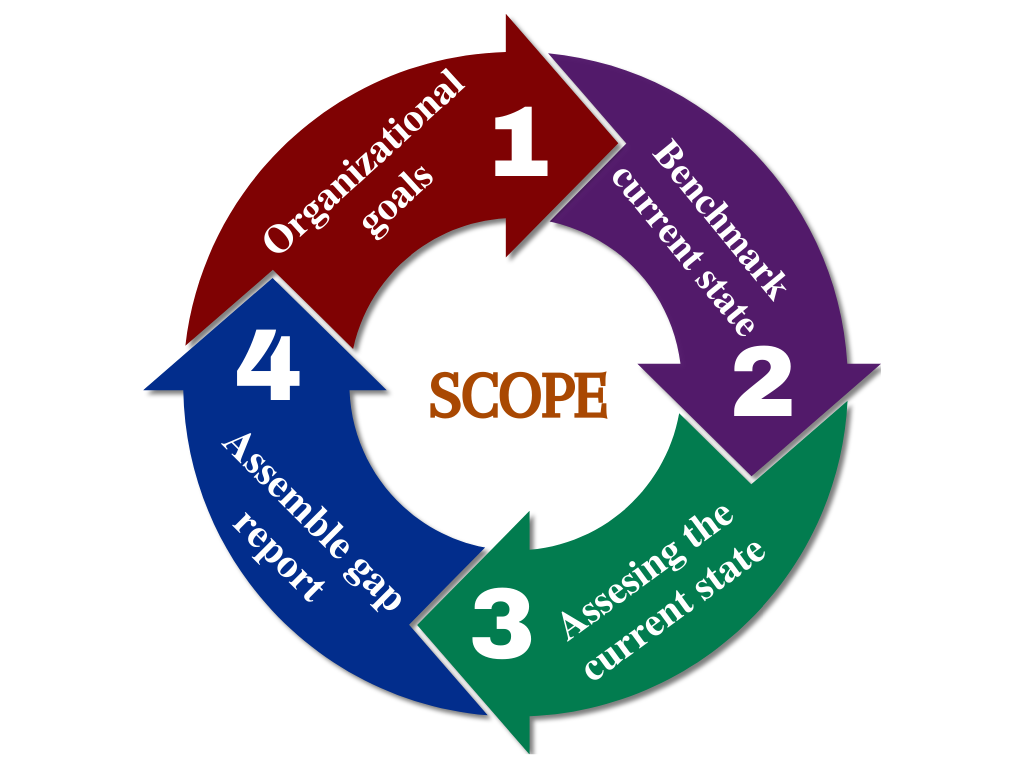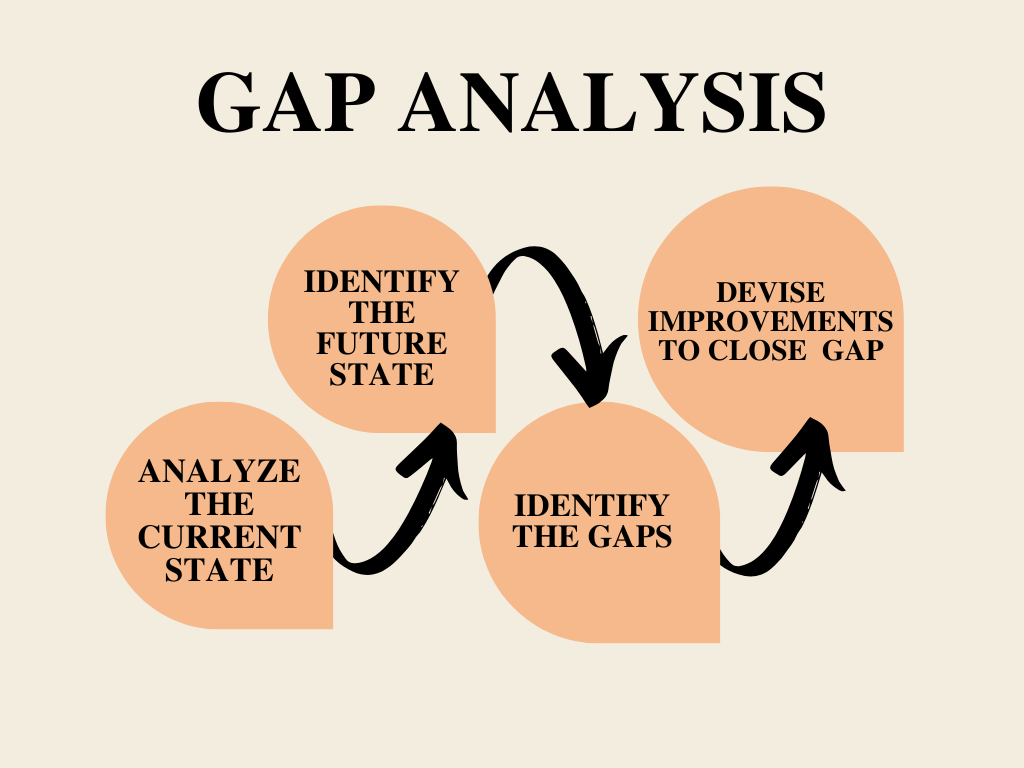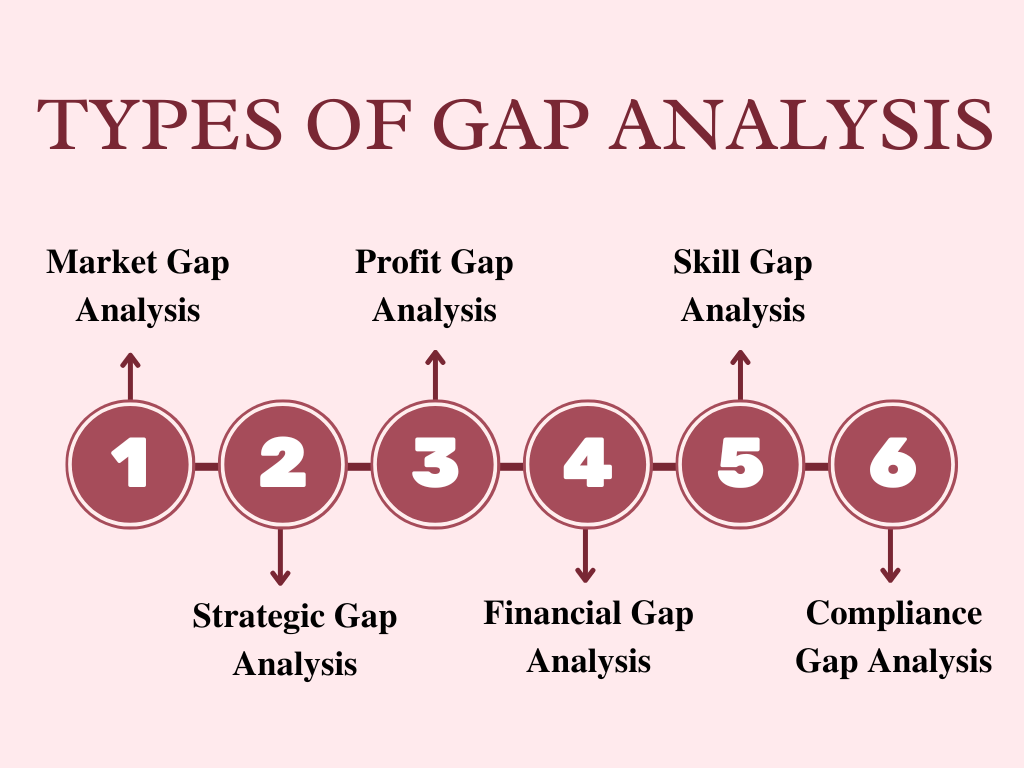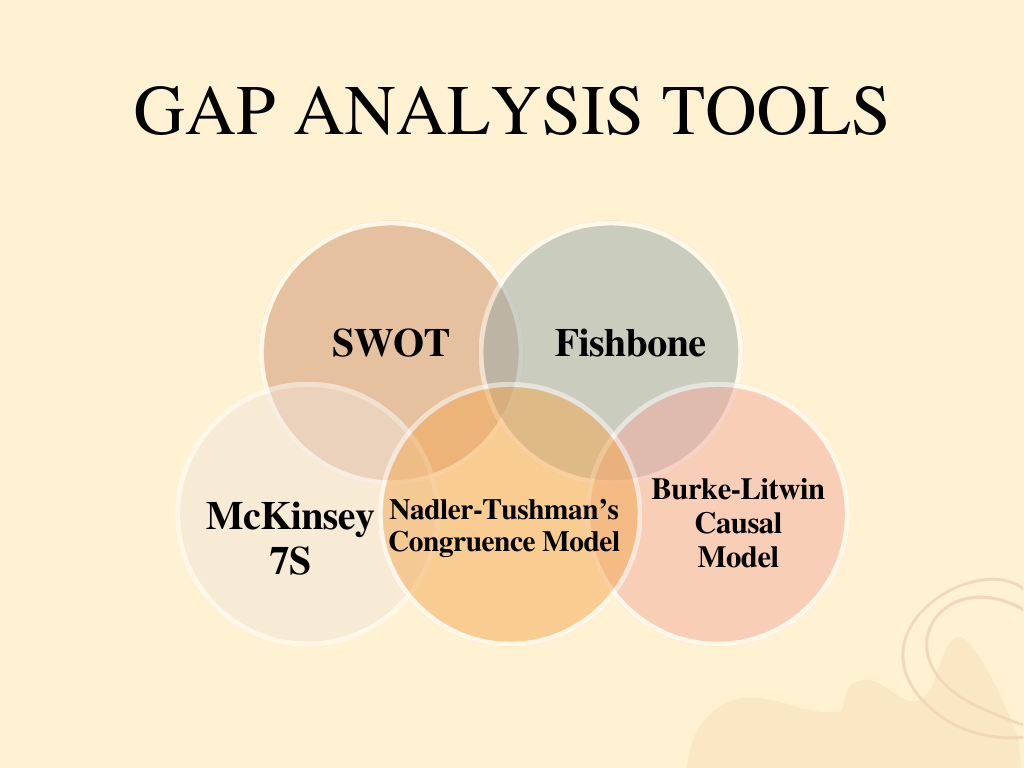Business Gap Analysis

What is Gap Analysis?
A Business Gap Analysis is a strategic analysis tool that helps to identify the gap between two business states, expected and current, and comes up with an action plan to remove this gap.
Simply it is a method of assessing the difference between current performance and expected performance.
Business Gap Analysis services help your business in the following ways.
Identify weak points:
If your business did not meet the expected goals and your business did not grow, as you wanted it to, do a Gap Analysis to identify the root cause of failure.
Measure actual resources:
If you have surplus resources at the end of the year, the Gap Analysis helps you to use these resources effectively in the future. Gap Analysis helps identify how everything was performing.
Intercommunicating strategies:
Strategic team can figure out the potential action plan to hit expected goals using Gap Analysis.
How it works
When organizations are not making the best use of capital, resources, and advanced technology, they may not be able to reach their potential growth. Hence Gap Analysis is preferred here. It is important for any type of organizational performance and allows companies to determine where they are standing currently versus where they wish to be.
Gap Analysis was widely used in the 1980s and is helpful to assess susceptibility to a variety of structure movements.
The ”gap” in Gap Analysis is a symbolic space between the current state and the expected state. The four steps in Gap Analysis will help ensure you know precisely what issues you’re facing and how to fix them.
Scope of Gap Analysis
Four steps of Gap Analysis defines
Organizational goals
Benchmarking current state
Assessing the current state
Assemble the gap report

Gap Analysis can be performed on
Strategic levels are where you compare the level of your business with the industry standards.
The operational level is where you compare the current state of business with the expected one.
When to perform a Gap Analysis
Business Gap Analysis is an important project management tool that helps you identify how to get over the default. You can do Gap Analysis any time but specifically, it is applied strategically to specific initiatives.
Here are some scenarios where you use Gap Analysis to help you to get from point A to point B.
1. During crucial planning
Using a Gap Analysis early in the planning process can help give your team a good starting point when you are looking for a strategic growth plan. Gap Analysis guides your team on how to go from the current state to the expected state. For example, if you are planning a half-year strategy, use Gap Analysis to review what you have achieved in the current half and set your goals to meet future demands.
2. Performance issues
If your business growth is going down the way, Gap Analysis helps you to fix the cause of it. By knowing the root cause your team can perform well to bring you desired results. For example, if your production is not meeting the expected product quality, you can use Gap Analysis to identify the problem with machinery or the reactants. Knowing the exact cause helps you to meet goals.
3. When stakeholders need additional context
Gap Analysis provides more contextual information than solid figures if your team is assembling business requirements. Gap Analysis can be a vital tool here.
How to conduct Analysis
Gap Analysis models break this process into four steps. Regardless of your industry type, follow these four simple steps to meet your business goals.
- Analyze the current state of your business
- Identify future state
- Identify the gaps
- Devise improvements to close the gap

Analyze the current state of your business
First, identify priority, choose which area you want to focus on, and start with the current state where your organization is operating. Collect all the quantitative and qualitative information such as financial records, surveys, or feedback. It may include benefits your company offers to its employees, geographical search area locations, or the products it sells.
Define what is important to your organization. The metrics that you use will be what is most important to the success of the business. Describe all your focused areas.
Identify the future state
The future state is also called the stretch goal. Once you have figured out how your organization is currently working, you need to be ideological. Set your goals or targets where you want to be within a reasonable timeframe. For example, the goal of your soap manufacturing business is to produce 12000 in the quarter year in comparison to 8500 being sold this year.
Identify the gaps in business
Now you have recognized the current state of your organization and where you wanted it to be in the future, it is time to fill this gap. Put all your efforts together to meet your demands. Make yourself equipped to close these gaps. Be specific about the gap and dig deep to find the cause of these gaps.
Devise improvements to close the gaps
Now you have figured out why those gaps occurred, it is time to implement solutions to those gaps. Establish a clear strategy and actionable objectives to help your transition. Evaluate your performance and compare results.
What happens after the Gap Analysis?
After optimistically emerging from the Gap Analysis exercise with great ideas for addressing the failure, execute all your plans to fill the gap.
Here is what needs to happen after Gap Analysis
- Choose a framework that helps to elaborate plans
- Unfold your framework with initiatives, goals, and projects
- Implement your plan and check your progress on the board
Types of Gap Analysis
Following types of Gap Analysis are performed.
- Market Gap Analysis
- Strategic Gap Analysis
- Profit Gap Analysis
- Financial Gap Analysis
- Skill Gap Analysis
- Compliance Gap Analysis

Market Gap Analysis
Market Gap Analysis is also called product analysis. Market Gap Analysis encompasses market and customer needs. If a company is able to identify the shortcomings of product supply to the customer, it can take measures to fill the gap. This gap is filled by external consultants who are much more experienced in areas of business that the company may not be operating in.
Strategic Gap Analysis
Strategic Gap Analysis is also called performance gap analysis and is an internal review of how a company is performing. This analysis often includes how the company has done against long-term plans.
It is used to measure how the company is surviving against its competitors. Strategic Gap Analysis points to potential areas for improvement.
Financial Gap Analysis
Financial Analysis aims at shortcomings of financial metrics. It may include margin percentages, overhead costs, and fixed vs variable components. The ultimate goal is to determine areas in which the competitor is more effectively performing. This information is used further for other analysis types.
Skill Gap Analysis
Skill Gap Analysis aims at the human element instead of looking for financial metrics. It helps to determine the shortfall of human expertise and lack of management skills. This analysis is simply training the company staff to pursue new expertise or skills.
This analysis is especially important for companies that have a skill set to maintain a position in the market.
Compliance Gap Analysis
Compliance Gap Analysis evaluates external regulations that command how something should be getting done. For example, seeking an external auditor to provide opinions on financial statements on accounting and reporting functions.
Compliance Gap Analysis has the intention of meeting all the on-board regulations, and reporting requirements, and avoiding fines.
Product Development Gap Analysis
When a company develops new products, they undergo Product Development Gap Analysis to know which product qualities will meet market demand and where the product will fall short.
By applying the above analysis the company will perform better to meet market demands and hold an appreciating place and successfully conquer future long-term goals.
Tools used for Gap Analysis
There are a few Gap Analysis models you can use in business management services.
- SWOT
- Fishbone
- McKinsey 7S
- Nadler-Tushman’s Congruence Model
- Burke-Litwin Causal Model

Benefits of Gap Analysis
Gap Analysis in Business Analysis carries a wide variety of benefits in the following ways.
Enhanced profitability
Companies that assess analysis have resources on hand and work efficiently. It helps to generate more profit and increased revenue growth.
Better manufacturing process
Preventing the gaps in business manufacturing, processes can be performed in a better way increasing the product yield, more efficient delivery and raw materials being on site.
Operational efficiency
A company can make changes in day-to-day activities by knowing the operational flaws in business.
Secured future planning
By identifying the resources needed, the company plans for gaps and errors before they occur.
Improved market share
By combining the above benefits, a company can have improved market share with increased sales levels.
Gap Analysis examples
The Gap Analysis process can be used in different business departments such as sales, accounting, human resources, and customer services.
But specifically, Gap Analysis is used in the following scenarios.
- Product launch
- Supply management
- Sales performance
- Individual assessment
- Productivity
You May Also Like

Role Of Virtual CFO In An SME
A Virtual CFO, by increasing their financial control and visibility, enables business owners in an informed decision-making process. The roles and responsibilities...

Tips For Managing Business Through Finance
All successful businesses have a strong finance function, and that differentiates the best from the others. Here are quick tips for...

Investment Dashboard
The investment dashboard is an integrated panel for tracking, reconsidering, and scaling the performance of investments of the organization. This panel...

Business Process Re-engineering
Business process reengineering is a management strategy and a systematic approach to improve product quality and reduce organizational cost, service, and speed...
